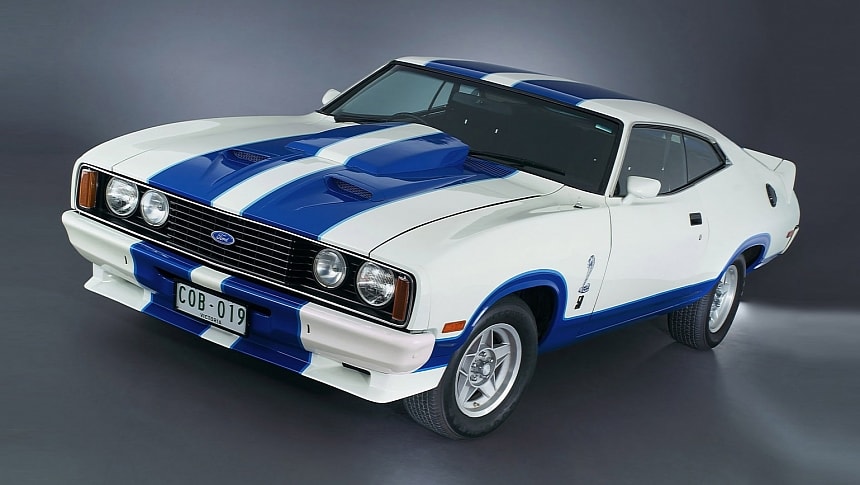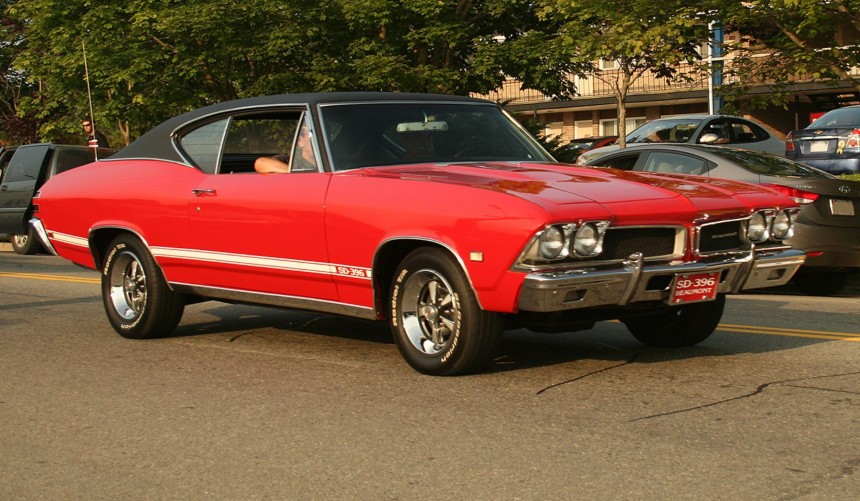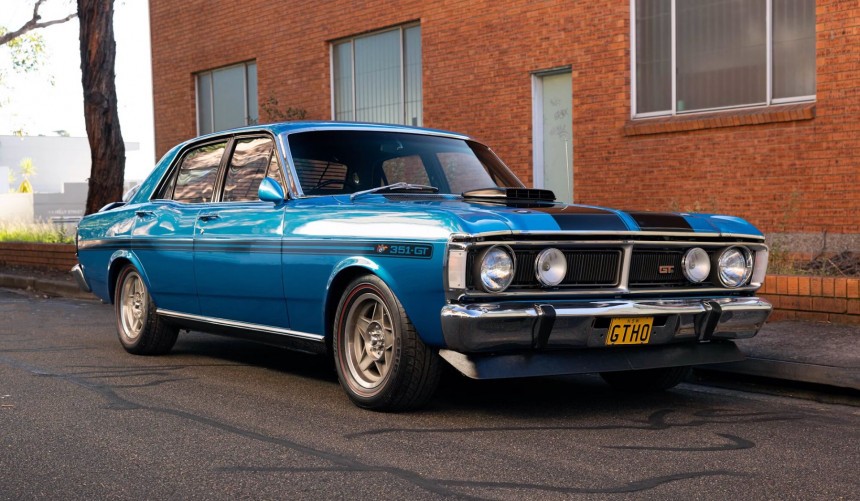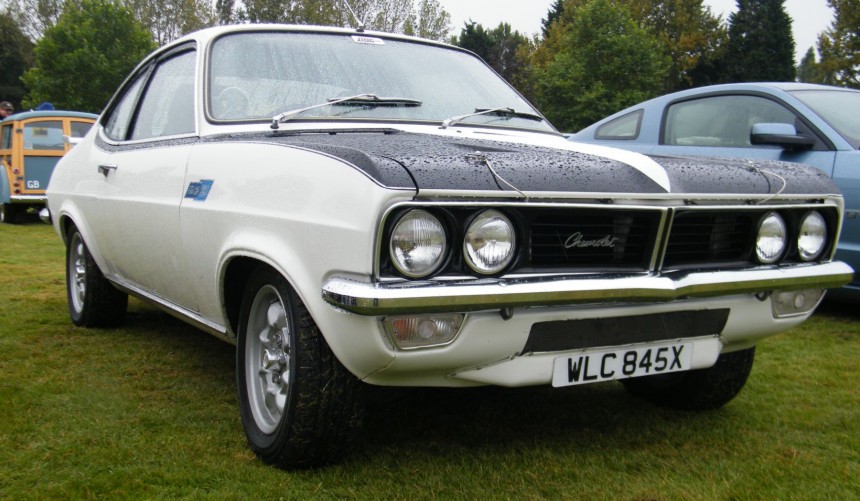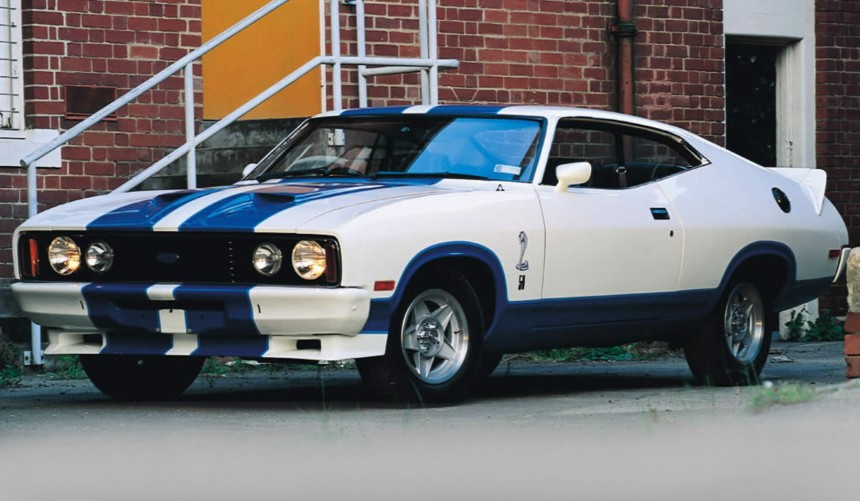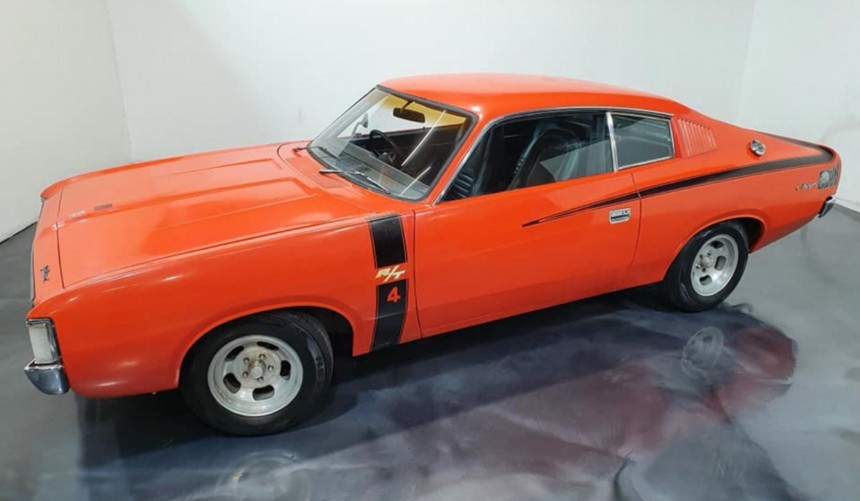During the 1960s and 1970s, the muscle car craze spilled over into other countries, giving birth to some epic machines that the US couldn't have.
Although performance-oriented cars existed prior to 1964, when Pontiac introduced the wildly popular GTO package for the LeMans, a new era of exciting performance began.
Though it didn't last for long, the golden age of muscle saw Detroit's Big Three (and even AMC) introduce ever more potent muscle cars with each model year.
The recipe that combined a powerful engine with an otherwise normal passenger car chassis was so successful that it had to be exported. While some American muscle cars were available in other markets, local branches also built their own muscle cars based on popular domestic models.
To promote car manufacturing in Canada, the Auto Pact (APTA) of the early 1960s prevented several US-built cars from being sold in the country.
In response, General Motors introduced the Acadian brand, which produced cars based on Chevy II/Nova sold by Pontiac-Buick dealers in Canada.
In 1966, Beaumont, a former trim of the Acadian, became a stand-alone brand that began offering a Chevelle-based, A platform intermediate.
Two years later, the high-performance SD-396 was introduced, and it became the most iconic Beaumont ever produced.
The regular 1968 Beaumont and the high-performance SD (Sport Deluxe) 396 were similar in appearance to the all-new second-generation Chevelle but with several bespoke exterior fittings and a dashboard borrowed from the Pontiac Tempest/LeMans/GTO.
A two-door fastback coupe or convertible, the SD-396 had the same performance chassis upgrades and powertrain as the American Chevelle SS396.
As standard, it came with a 325-hp 396-ci (6.5-liter) Turbo-Jet big-block V8 or an optional 350-hp version, but the 375-hp variant of the Chevelle SS was not available in the Canadian muscle car.
Available only through the 1968 model year, the Beaumont SD-396 was produced in just 41 units.
During the 1960s and 1970s, the muscle car craze also reached Australian shores, leading local branches of Ford, GM, and Chrysler to build high-performance versions of their domestic models.
One of the greatest Aussie muscle cars ever created was the GT-HO Phase III, a homologation special based on the conventional Falcon GT.
While the four doors disqualified it from being a true muscle car in the eyes of American purists, for the locals, it was (and still is) a muscle car legend.
Compared to the standard GT, the GT-HO received a long list of performance upgrades, including larger brakes, a beefed-up suspension, and a larger fuel tank.
However, the most important upgrade was a bespoke version of the 351-ci (5.7-liter) Cleveland V8, conservatively rated at 300 hp.
Dubbed the fastest four-door sedan in the world at the time of its release, the GT-HO Phase III could sprint to 62 mph (100 kph) from a standstill in 6.4 seconds and ran the quarter mile in 14.4 seconds.
Only offered in 1971, the legendary model was built in just 300 units, of which about 100 are still around.
The Vauxhall Firenza was a small two-door coupe marketed in the UK during the first half of the 1970s.
Powered by a series of inline-fours, the GM Europe econocar had nothing in common with an American muscle car.
However, in South Africa, where it was marketed as the Chevrolet Firenza, a limited-edition launched in 1973 changed that.
Finished in white with a black accented hood and a bespoke aluminum spoiler, the Firenza Can-Am was powered by the 302-ci (4.9-liter) small-block V8 found under the hood of the Z/28 Camaro in the US.
Conservatively rated at 290 hp, the engine enabled the small and lightweight Firenza Can-Am to sprint from 0 to 60 mph (100 kph) in 5.4 seconds, which made it as quick as a 1973 De Tomaso Pantera GTS.
By 1978, the golden age of muscle was over in the US, and while a few carmakers continued to carry the performance torch (albeit with reduced output figures), Ford was not among them.
The Mustang, which used to be among the greats a few years earlier, was now a Pinto-based econocar that only offered a trim (King Cobra) that looked powerful but wasn't.
However, Ford's Australian branch did a far better job that year, introducing the limited-edition Falcon Cobra, which paid homage to Carroll Shelby's GT Mustangs.
Finished in Sno-White with Bold Blue dual stripes and donning several exterior upgrades, including a bulged hood, the Falcon Cobra was powered by either the 351-ci (first 200 units) or the 302-ci (last 200) Cleveland V8 rated at 217 and 202 net hp, respectively.
That Falcon Cobra was not only more aggressive looking but also more powerful and faster than the 139-hp King Cobra 'Stang.
As the name implies, the Chrysler Valiant was a re-badged, Australian-built version of the US Plymouth Valiant, and the similarities didn't end there.
While Plymouth offered the Valiant-based performance-oriented Duster, its Aussie counterpart had the Charger R/T, which, in 1972, became insanely powerful with the addition of the E49 package.
A homologation special, the Charger R/T E49 was powered by a HEMI, but it wasn't the iconic 426 Elephant motor, nor was it a V8.
Like all other VH Valiants, the E49 hid a Hemi-6 inline-six, albeit a high-performance version that displaced 265 ci (4.3 liters) and produced no less than 302 hp.
With all that power on tap, the little Charger could sprint to 60 mph (97 kph) in 6.1 seconds and run the quarter mile in 14.1 seconds.
Apart from the powerful six, the E49 package added a larger fuel tank, a 16:1 steering box, 14×7-inch alloys, and heavy-duty front disc brakes.
Though it didn't last for long, the golden age of muscle saw Detroit's Big Three (and even AMC) introduce ever more potent muscle cars with each model year.
The recipe that combined a powerful engine with an otherwise normal passenger car chassis was so successful that it had to be exported. While some American muscle cars were available in other markets, local branches also built their own muscle cars based on popular domestic models.
1968 Beaumont SD-396
In response, General Motors introduced the Acadian brand, which produced cars based on Chevy II/Nova sold by Pontiac-Buick dealers in Canada.
In 1966, Beaumont, a former trim of the Acadian, became a stand-alone brand that began offering a Chevelle-based, A platform intermediate.
Two years later, the high-performance SD-396 was introduced, and it became the most iconic Beaumont ever produced.
The regular 1968 Beaumont and the high-performance SD (Sport Deluxe) 396 were similar in appearance to the all-new second-generation Chevelle but with several bespoke exterior fittings and a dashboard borrowed from the Pontiac Tempest/LeMans/GTO.
A two-door fastback coupe or convertible, the SD-396 had the same performance chassis upgrades and powertrain as the American Chevelle SS396.
As standard, it came with a 325-hp 396-ci (6.5-liter) Turbo-Jet big-block V8 or an optional 350-hp version, but the 375-hp variant of the Chevelle SS was not available in the Canadian muscle car.
Available only through the 1968 model year, the Beaumont SD-396 was produced in just 41 units.
1971 Ford Falcon XY GT-HO Phase III
One of the greatest Aussie muscle cars ever created was the GT-HO Phase III, a homologation special based on the conventional Falcon GT.
While the four doors disqualified it from being a true muscle car in the eyes of American purists, for the locals, it was (and still is) a muscle car legend.
Compared to the standard GT, the GT-HO received a long list of performance upgrades, including larger brakes, a beefed-up suspension, and a larger fuel tank.
However, the most important upgrade was a bespoke version of the 351-ci (5.7-liter) Cleveland V8, conservatively rated at 300 hp.
Dubbed the fastest four-door sedan in the world at the time of its release, the GT-HO Phase III could sprint to 62 mph (100 kph) from a standstill in 6.4 seconds and ran the quarter mile in 14.4 seconds.
Only offered in 1971, the legendary model was built in just 300 units, of which about 100 are still around.
1973 Chevrolet Firenza Can-Am
Powered by a series of inline-fours, the GM Europe econocar had nothing in common with an American muscle car.
However, in South Africa, where it was marketed as the Chevrolet Firenza, a limited-edition launched in 1973 changed that.
Finished in white with a black accented hood and a bespoke aluminum spoiler, the Firenza Can-Am was powered by the 302-ci (4.9-liter) small-block V8 found under the hood of the Z/28 Camaro in the US.
Conservatively rated at 290 hp, the engine enabled the small and lightweight Firenza Can-Am to sprint from 0 to 60 mph (100 kph) in 5.4 seconds, which made it as quick as a 1973 De Tomaso Pantera GTS.
1978 Ford Falcon Cobra
The Mustang, which used to be among the greats a few years earlier, was now a Pinto-based econocar that only offered a trim (King Cobra) that looked powerful but wasn't.
However, Ford's Australian branch did a far better job that year, introducing the limited-edition Falcon Cobra, which paid homage to Carroll Shelby's GT Mustangs.
Finished in Sno-White with Bold Blue dual stripes and donning several exterior upgrades, including a bulged hood, the Falcon Cobra was powered by either the 351-ci (first 200 units) or the 302-ci (last 200) Cleveland V8 rated at 217 and 202 net hp, respectively.
That Falcon Cobra was not only more aggressive looking but also more powerful and faster than the 139-hp King Cobra 'Stang.
1972 Chrysler Valiant Charger R/T E49
While Plymouth offered the Valiant-based performance-oriented Duster, its Aussie counterpart had the Charger R/T, which, in 1972, became insanely powerful with the addition of the E49 package.
A homologation special, the Charger R/T E49 was powered by a HEMI, but it wasn't the iconic 426 Elephant motor, nor was it a V8.
Like all other VH Valiants, the E49 hid a Hemi-6 inline-six, albeit a high-performance version that displaced 265 ci (4.3 liters) and produced no less than 302 hp.
With all that power on tap, the little Charger could sprint to 60 mph (97 kph) in 6.1 seconds and run the quarter mile in 14.1 seconds.
Apart from the powerful six, the E49 package added a larger fuel tank, a 16:1 steering box, 14×7-inch alloys, and heavy-duty front disc brakes.
